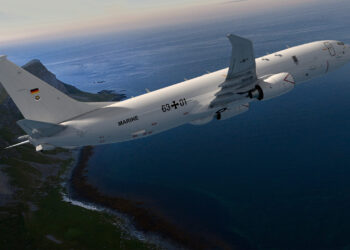Rolls-Royce ,
Rolls-Royce, a world leader in marine solutions, has won a £96 million contract to provide power and propulsion equipment, including four gas turbines, for two of the world's largest warships – the UK’s new 65,000 tonne aircraft carriers, HMS Queen Elizabeth and HMS Prince of Wales.
The order is an important milestone in the Rolls-Royce marine business strategy of being a major supplier of integrated power and propulsion systems for naval and commercial ships.
Rolls-Royce is supplying the MT30 gas turbine, the most powerful available in the marine market today, as part of an integrated system which includes the giant carrier’s propellers and propeller shafts as well as rudders, stabilisers and some electrical systems.
John Paterson, Rolls-Royce President – Marine said: “The contract is recognition of our ability to supply a wide range of power and propulsion equipment as part of a fully integrated system. The contract is the third major naval programme to be powered by the MT30, as the engine has already been selected for the Lockheed Martin version of the Littoral Combat Ship and DDG-1000 destroyer, both for the U.S. Navy.”
Rolls-Royce is supplying the equipment as part of a ‘sub-alliance’ team that has overall responsibility for delivery of the entire power and propulsion system. The contract has been awarded by the carrier main alliance partner, Thales UK.
Rolls-Royce is also discussing future equipment support options for the two ships, which are due to go into service in 2014 and 2016. The MT30 gas turbines will be assembled and tested in Bristol and delivered in 2011-2013.
Background Information
The Marine business of Rolls-Royce employs over 7,000 people in 34 countries with the main manufacturing centres being in the UK, the Nordic countries, the United States and increasingly Asia.
Rolls-Royce is a world leader in marine solutions, providing products, service and expertise to more than 20,000 commercial and naval vessels in the offshore, merchant, naval and submarines markets. It designs ships and its product range includes propulsion systems featuring diesel engines and gas turbines, propellers, thrusters and water jets. Rolls-Royce also provides manoeuvring and stabilising systems and deck machinery. About 40 per cent of marine turnover comes from aftermarket service support, with a global customer support network of sales and service centres in 33 countries. Rolls-Royce equipment is in service with more than 70 navies.
The UK’s Future Aircraft Carriers are being constructed by the Aircraft Carrier Allicance (ACA), consisting of Thales UK, BAE Systems, BVT Surface Fleet, Babcock Marine and Ministry of Defence, which acts as both participant and client. The CVF Power and Propulsion Sub-Alliance is led by Thales UK (as a member of the ACA) with other members being Converteam, L-3 Communications and Rolls-Royce. As an alliance, it will adopt similar ways of working to the ACA in order to generate performance incentives and minimise integration risks.
The carriers are the biggest and most powerful ships ever built for the Royal Navy. Together with the aircraft they will carry, these ships will enable the UK to increase its strategic effect around the world, at a time and place of its choosing.
The MT30 gas turbine order continues a relationship with the Royal Navy that dates back to 1953, when RM60 gas turbines powered HMS Grey Goose. The MT30 is part of the Rolls-Royce Trent family of engines which power commercial airliners.
MT30 has been selected for the Lockheed Martin version of Littoral Combat Ship – USS Freedom. The vessel’s twin MT30s had their inaugural ‘light-off’ recently, marking a first for the engines onboard ship.
The new carriers are due to be equipped with the STOVL (Short Take-Off and Vertical Landing) variant of the F-35 Lightning II (Joint Strike Fighter) aircraft. Rolls-Royce is using its experience with the Harrier's Pegasus engine to develop a new STOVL engine for the F-35. Additionally, Rolls-Royce is teamed with GE to develop the F136 interchangeable main engine for the F-35.









